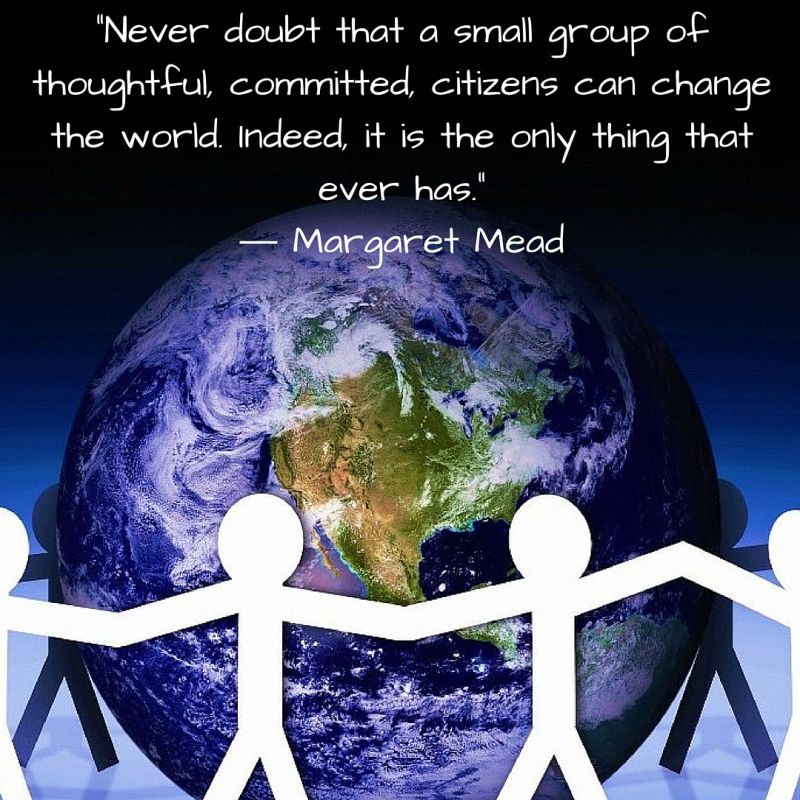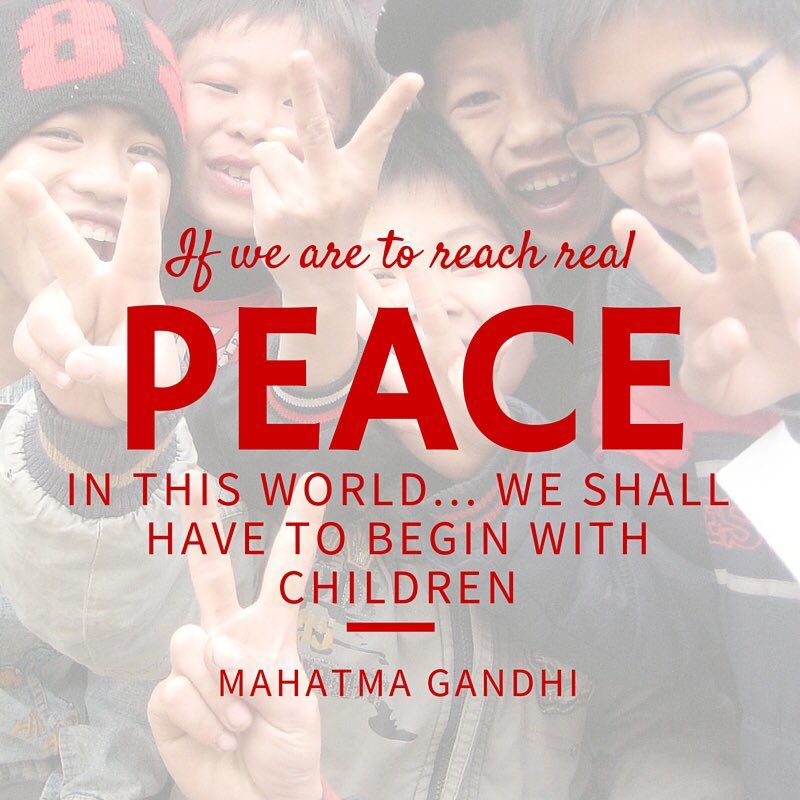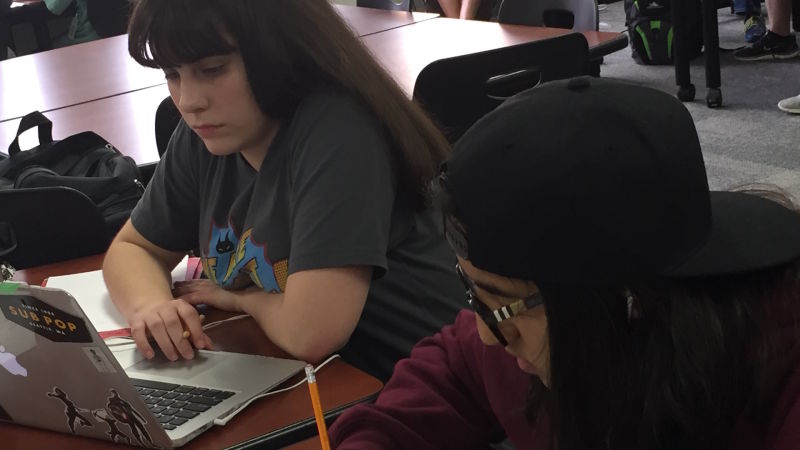As an English facilitator, I’ve come to realize that literacy skills are intrinsic to teaching participatory politics. No one can advocate for meaningful change, much less formulate an informed opinion, without critical reading, listening, speaking, and writing. And so, for me, it’s not a choice but rather an obligation to invite my young learners to consider political topics.
Each and every day, there are important reminders to refocus my intention and agency as an educator who develops the global competencies of her learners. These may seem simplistic, self-evident, “no-duh” points, but I return to these daily as reminders to foster tolerance and understanding of diversity in political beliefs.
1. I will not discuss my own political tendencies with my learners.
I go back and forth at times with this one. In my heart, I’d like to model having my own beliefs and discussing them openly with my learners without pushing these views on them. Ultimately, though, I feel learners can easily be influenced. Certainly, there are certain causes I am passionate about, but there are ways to present these without declaring specific affiliations that may sway my learners one way or another.
The challenge is to keep my own political choices private, while modeling the respect and tolerance in civic discourse that I desire my learners to have. I also want to encourage them to be inspired and have conviction, and I believe I can do this by championing my chosen causes. I am resolute in allowing my learners to make their own decisions, and giving them access to various credible sources and different perspectives is pivotal to this process.
2. I will create low-stake invitations for learners to voice their informed opinions on various political topics.
Most of my learners are entrenched in social media and various platforms for sharing and discussing all sorts of information. Rarely, however, do they understand that these spaces can be used for more academic purposes. Some platforms like Hackpad may be messier than others, lending themselves to what seems to be a more casual environment. Although less organized than a threaded discussion board, there’s an ease of discussion that seems to encourage interaction. Here’s a Hackpad about Youth in Participatory Politics I asked my learners to contribute to:
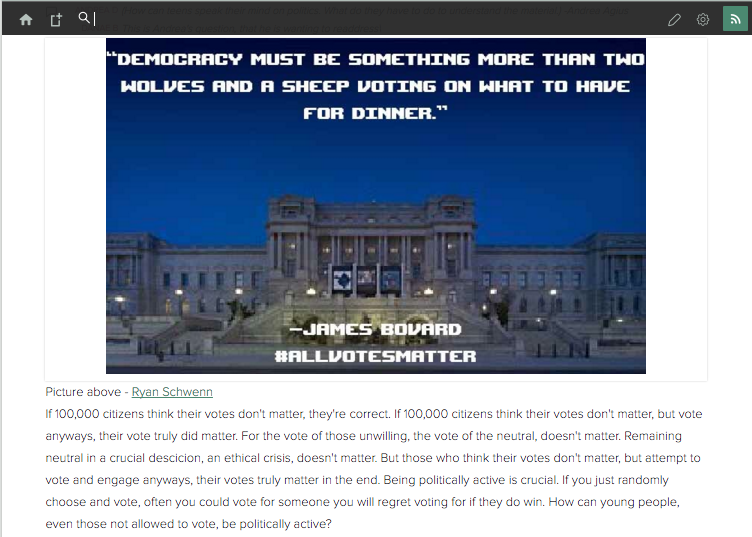 Click on the screenshot above to see the full class discussion.
Click on the screenshot above to see the full class discussion.
Their responses were genuine, supportive, but also challenging. It was a nice extension to their responses to a recent Do Now post that asked: “What Does Being Politically Active Mean to You?”. The Hackpad added a multimodal layer to the discussion. Since learners could easily see the digital posters created by their peers, we see some deconstruction of media and what makes it effective. Such media literacy will aid in their understanding of campaign ads on their rhetorical appeals, and more importantly, how to create their own media that will effectively communicate their views and perhaps, even engender any desired changes.
3. I will attempt to speak the transmedia language of my learners.
Everyone wants more bang for their buck. In this “on demand” world we live in, the quicker you can get your message across, the more striking the design, the more heartstring-tugging the image, the more attention received to that particular piece of media. And although it’s important for me to guide my learners in both the critical consumption and production of longer more traditional texts in the form of articles, essays, books, etc., it’s equally important to speak the language of my learners. That most often means shorter bursts of text coupled with carefully chosen graphics and sound.
One way to make such messages more appealing and prepare it for publication across various platforms like Facebook or Instagram is a digital poster. Canva is an online design application that can make messages more impactful with just a few keystrokes. I created the Canva posted above as part of my invitation to my learners to contribute to the discussion. Learners also created their own Canvas to respond to questions on the Hackpad. This one by Katelin Reznicek expresses the hopeful nature many learners shared in regards to Millennials and participatory politics.
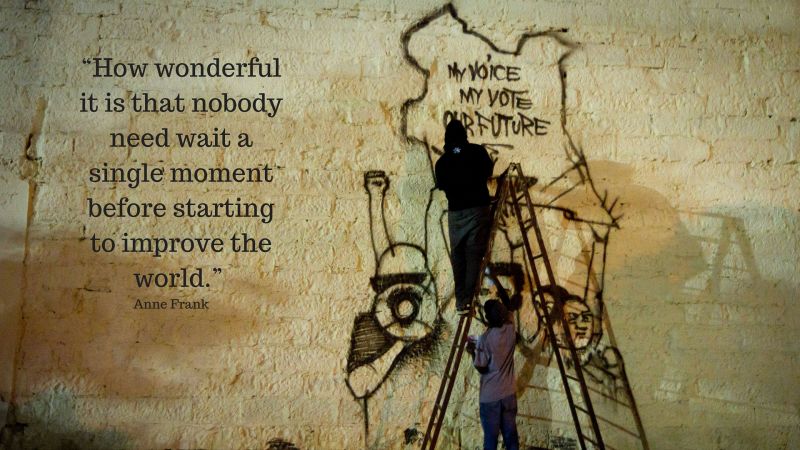
It is also helpful to allow for learner choice when responding in media. Here’s a video response created by Daniel Larva that was posted to the Hackpad.
Learners enjoy the challenge of learning new media-making skills while demonstrating their understandings. For some, this makes the process more rewarding while helping them be more present and deliberate in the learning. This added production-centered element of civic discourse seems to appeal to the diverse learning styles and interests of Millennials.
Ultimately, I hope educators feel there are more options and strategies to inviting youth to political discussions. My hope is that teenagers begin to find their voice through research and deep discussions of issues that interest them. And a final hope is that they feel like although they may not be able to vote, their ideas still count. Learners at any age should feel valued and invested in the democratic process. As my learner Anika Lee points out:
